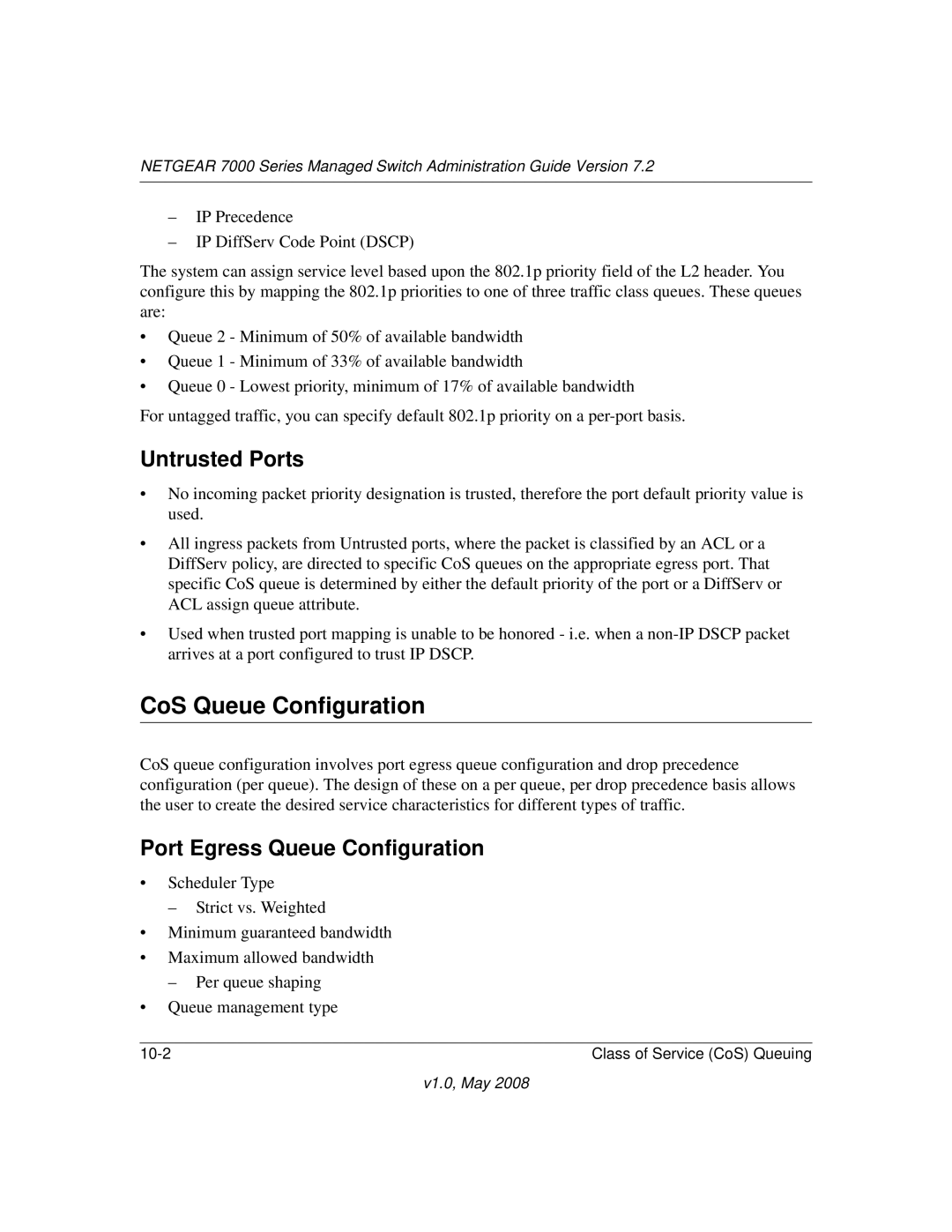
NETGEAR 7000 Series Managed Switch Administration Guide Version 7.2
–IP Precedence
–IP DiffServ Code Point (DSCP)
The system can assign service level based upon the 802.1p priority field of the L2 header. You configure this by mapping the 802.1p priorities to one of three traffic class queues. These queues are:
•Queue 2 - Minimum of 50% of available bandwidth
•Queue 1 - Minimum of 33% of available bandwidth
•Queue 0 - Lowest priority, minimum of 17% of available bandwidth
For untagged traffic, you can specify default 802.1p priority on a
Untrusted Ports
•No incoming packet priority designation is trusted, therefore the port default priority value is used.
•All ingress packets from Untrusted ports, where the packet is classified by an ACL or a DiffServ policy, are directed to specific CoS queues on the appropriate egress port. That specific CoS queue is determined by either the default priority of the port or a DiffServ or ACL assign queue attribute.
•Used when trusted port mapping is unable to be honored - i.e. when a
CoS Queue Configuration
CoS queue configuration involves port egress queue configuration and drop precedence configuration (per queue). The design of these on a per queue, per drop precedence basis allows the user to create the desired service characteristics for different types of traffic.
Port Egress Queue Configuration
•Scheduler Type
–Strict vs. Weighted
•Minimum guaranteed bandwidth
•Maximum allowed bandwidth
–Per queue shaping
•Queue management type
Class of Service (CoS) Queuing |
